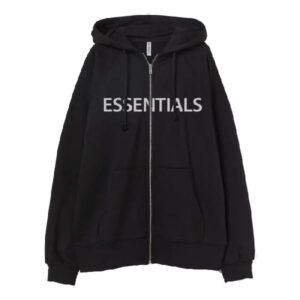Hiking is one of the best ways to explore nature, stay fit, and enjoy the outdoors. But long trails, uneven terrain, and rugged paths can quickly turn a fun adventure into a painful experience if your boots don’t fit properly. For hikers with wider feet or toe shapes, wide toe hiking boots are an absolute game-changer.
These boots are designed with extra space in the forefoot, allowing toes to spread naturally, preventing discomfort, and improving stability on challenging trails. Whether you’re a weekend hiker or a seasoned trekker, choosing the right wide toe hiking boots can protect your feet and enhance your overall hiking experience.
Why Wide Toe Hiking Boots Matter
Hiking boots need to balance support, durability, and comfort. Standard boots often have a narrow toe box, which can lead to:
-
Blisters and calluses
-
Toe pain and bruising
-
Ingrown nails or hammertoes
-
Swelling on long hikes
-
Reduced balance and fatigue
Wide toe hiking boots solve these problems by providing:
1. Room for Natural Toe Splay
Your toes naturally spread when walking or climbing. Wide toe boxes prevent cramping, pressure, and pinching, allowing for a more natural stride.
2. Enhanced Comfort on Long Trails
Extra space reduces friction, swelling, and discomfort — especially during all-day hikes or backpacking trips.
3. Better Stability and Balance
A wider forefoot base increases ground contact and stability on uneven surfaces. This reduces the risk of slips, twists, and fatigue.
4. Accommodation for Swollen or Sensitive Feet
Hikers with bunions, high arches, or diabetes benefit from boots that provide extra width and cushioning.
Key Features to Look for in Wide Toe Hiking Boots
When choosing wide toe hiking boots, focus on features that maximize comfort and trail performance:
-
Wide Toe Box: The hallmark feature — ensures toes aren’t cramped and provides better balance.
-
Supportive Midsole: EVA or dual-density midsoles absorb shock and protect feet on rocky terrain.
-
Arch and Heel Support: Keeps feet aligned, reduces fatigue, and prevents pronation issues.
-
Breathable Uppers: Mesh or waterproof leather helps regulate temperature and keeps feet dry.
-
Durable Outsole: Rubber soles with deep lugs provide traction on dirt, mud, and rocky trails.
-
Adjustable Fit: Laces, hooks, and padded collars allow customization for a secure yet comfortable fit.
-
Lightweight Design: Reduces fatigue during long hikes while still offering protection.
Who Should Consider Wide Toe Hiking Boots
Wide toe hiking boots are not just for people with naturally wide feet. Consider them if you:
-
Have swelling or foot conditions like bunions, hammertoes, or diabetes
-
Experience discomfort in standard hiking boots
-
Wear thicker hiking socks for warmth or padding
-
Prefer extra room for comfort on multi-day treks
-
Want better balance and stability on uneven trails
Top Types of Wide Toe Hiking Boots
1. Trail Hiking Boots
Lightweight boots for day hikes and moderate trails. They offer comfort, breathability, and moderate ankle support.
Recommended:
FitVille Trail Explorer Wide Toe Boot – wide forefoot, cushioned EVA midsole, and slip-resistant outsole for long walks on varied terrain.
2. Backpacking Boots
Designed for multi-day treks with heavy backpacks. Extra toe space and structured support prevent blisters and fatigue during long miles.
Recommended:
FitVille Rebound Core Hiking Boot V1 – up to 4E width, dual-density EVA cushioning, EnergyWave heel pad, and reinforced toe protection.
3. Waterproof Hiking Boots
Ideal for wet conditions or rainy trails. Waterproof leather or treated mesh keeps feet dry while the wide toe box ensures comfort with thicker socks.
Recommended:
FitVille HydroTrail Wide Toe Boot – waterproof upper, extra-wide fit, and durable rubber outsole for slippery surfaces.
4. Winter Hiking Boots
Insulated boots for snow and icy conditions. Extra width allows room for thermal socks and swelling from cold or extended walking.
Recommended:
FitVille SnowHiker Extra Wide Boot – insulated midsole, 4E toe box, and deep-lug rubber soles for grip on snow and ice.
How to Choose the Right Fit
-
Measure Your Feet: Do this at the end of the day when your feet are slightly swollen.
-
Try with Hiking Socks: Your boots should accommodate the socks you plan to wear on hikes.
-
Check the Toe Box: Ensure at least a thumb’s width between your longest toe and the front of the boot.
-
Walk and Test: Make sure there’s no rubbing on heels, sides, or toes.
-
Consider Width Options: Look for 2E, 4E, or even 6E widths if your feet need extra space.
Tips for Maintaining Your Hiking Boots
-
Break Them In Gradually: Start with short walks to avoid blisters.
-
Keep Them Clean: Remove dirt and mud regularly; dry naturally.
-
Condition Leather: For leather boots, use a conditioner to maintain flexibility and water resistance.
-
Replace Insoles When Needed: Over time, insoles lose cushioning and support.
-
Store Properly: Avoid crushing boots; keep them upright to maintain shape.
Final Thoughts
Wide toe hiking boots aren’t just a luxury — they’re a necessity for anyone who wants to hike comfortably, safely, and for long distances. By giving your toes space, supporting arches, and cushioning every step, these boots transform the hiking experience.
Brands like FitVille offer a variety of wide toe hiking boots for men and women, combining ergonomic designs, durable construction, and modern style. Whether you’re exploring local trails, trekking in the mountains, or facing wet and snowy conditions, the right wide toe hiking boots will keep you moving comfortably, confidently, and pain-free.
Adventure starts with a single step — make sure your wide toe hiking boots are ready for the journey.




